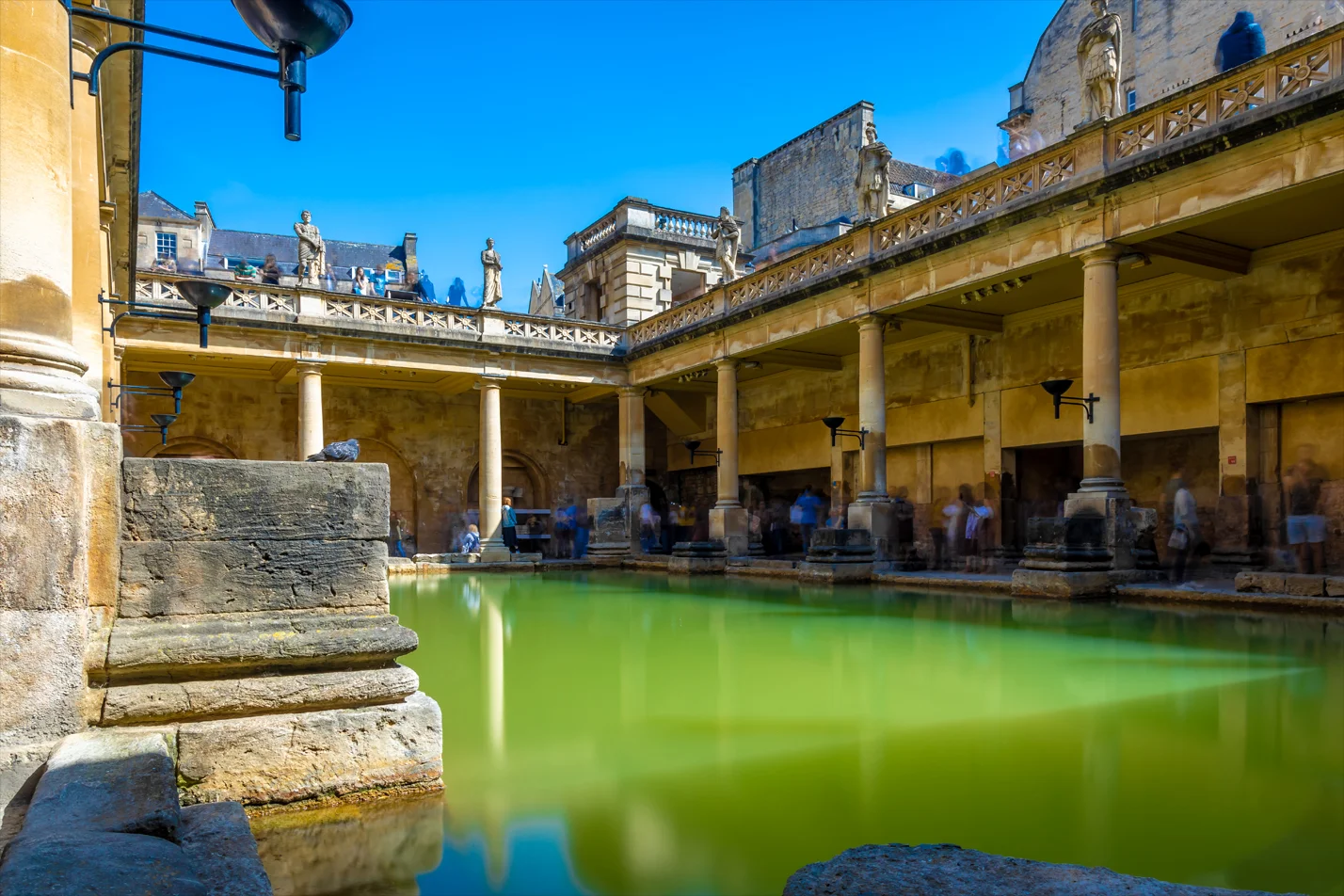A new study, published in the Microbe journal, has uncovered a diverse array of microorganisms in the geothermal waters at Roman Bath that may have super healing properties.
Bath, known as Aquae Sulis during the Roman period, is located in the modern-day city of Bath, England. The Romans constructed a bathing complex and temple at the site of three natural hot springs, which are heated by geothermal activity raising the water temperature to between 40 and 45°C.
The entire process spans 10,000 years, beginning with rainwater that penetrates through the carboniferous limestone rock in the Mendip Hills and the Avon Valley.
The water then percolates through aquifers to depths of 2,700 to 4,300 metres, where it is heated to temperatures close to boiling point, and then rises to the surface through fissures and faults in the limestone rock.
Following the collapse of Roman Britain, the baths were redeveloped over the following millennia. This includes the 12th century construction of a curative bath over the King’s Spring reservoir, the Queen’s Bath during the 16th century, and the more recent 18th century construction.
Throughout the centuries, the waters at Bath were thought to have restorative or healing properties. In a legend based on a story told by Geoffrey of Monmouth, King Lear’s father, Bladud, cured himself of leprosy by trying the waters.
In a recent study by the University of Plymouth, scientists collects samples of water, sediment, and biofilm from the King’s Spring and the Great Bath.
Metagenomic sequencing was performed on the samples for bacterial and archaeal community exploration, revealing 300 distinct types of bacteria, including Actinobacteria and Myxococcota which are known for antibiotic production.
Further tests revealed that 15 of these isolates – including examples of Proteobacteria and Firmicutes – showed varying levels of inhibition against human pathogens, including E.coli, Staphylococcus Aureus and Shigella flexneri.
According to the study authors: “From this data, there is clear potential for novel antimicrobial natural products from the Roman Baths, as has been demonstrated from other thermal hot springs globally.”
This discovery comes at a time when science is seeing a rise in the antimicrobial resistance of pathogenic bacteria to currently used antibiotics, responsible for the deaths of more than 1.25 million people globally each year.
“With informed knowledge of the properties of the Roman Baths gained during this study, the likelihood of isolating novel species from candidate groups, such as Actinobacteria and Myxococcuta, in future screening programmes will improve significantly. With further metagenomic sequencing and identification of biosynthetic genes clusters present in the Roman Bath the full potential of this site will be realised,” added the study authors.
Header Image Credit : Shutterstock – Alexey Fedorenko
Sources : Plymouth University | Physicochemical and metagenomic analysis of samples from the Roman Baths (Bath, UK) reveals high bacterial and archaeal diversity and a potential for antimicrobial discovery. https://doi.org/10.1016/j.microb.2024.100075





